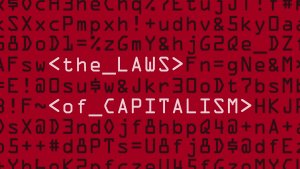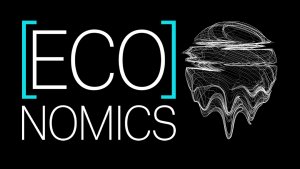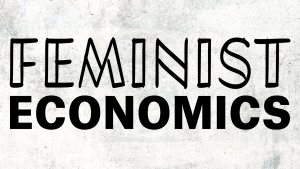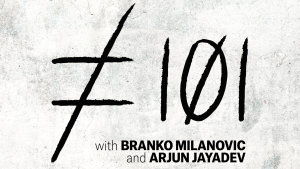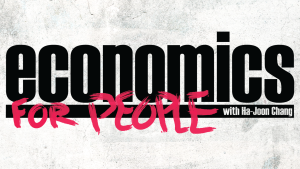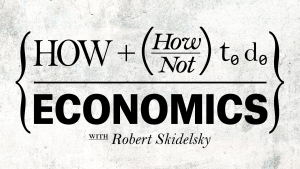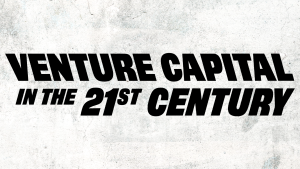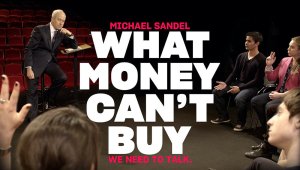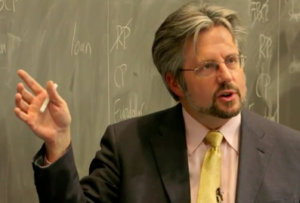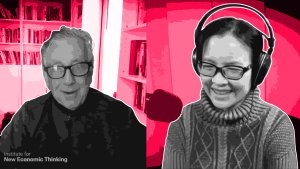In this seven-episode series, Yuen Yuen Ang explains how China escaped poverty and became the second largest economy in the world. Rejecting popular assumptions of Chinese exceptionalism, she shows that China’s path to a mixture of wealth and capitalist excesses is more like the American experience than most people think.
EPISODE 1
Three Chinas: Mao, Deng, and Xi
Professor Ang introduces the differences in Chinese development under Mao, Deng, and Xi
Takeaways
China’s rise has two sides: rapid, sustained growth + corruption, inequality, and financial bubbles
- The American analogy of a “Gilded Age” usefully captures the bright and dark side of China’s rise.
- It also reminds us that China is not unique.
- Growth is not absolute triumph & running into problems is not tantamount to collapse.
There is not one, but at least three different Chinas since 1949—Mao, Deng, and Xi.
- Deng’s capitalist revolution delivered the first Chinese Gilded Age.
- Xi inherited the Gilded Age, and Ang characterizes the last 10 years of his tenure as a “Red Progressive” platform—socially progressive policies carried out through commands and campaigns combined with increased political control.
Main References
- 2022. “Has China’s Economic Success Proven that Autocracy is Superior to Democracy?” In China Questions II: Critical Insights into US-China Relationship, Harvard University Press.
Secondary references
Economic take-off under Deng
- 2016. How China Escaped the Poverty Trap. Cornell University Press.
Xi takes over the Gilded Age
- 2020. China’s Gilded Age: The Paradox of Economic Boom and Vast Corruption. Cambridge University Press.
Xi’s Red Progressive Platform
- 2022. “The Clash of Two Gilded Ages,” Noema, 31 August 2022.
| SUBJECT | REFERENCE | LINK | TIME STAMP |
|---|---|---|---|
Intro | 0-1:26 | ||
Gilded Age | HW Brands | 1:30-3:21 | |
Mark Twain & Charles Warner | |||
U.S. Progressive Era 1890-1920 | Library of Congress State Department | 3:22-3:50 | |
Three China’s: Mao, Deng, Xi | 3:51-4:25 | ||
Mark Twain Quote | |||
Mao Zedong 1949-1976 | 4:52-5:39 | ||
Centrally Planned Economy | |||
The Cultural Revolution 1966-1976 | |||
Famine, Poverty, and Mass Violence | |||
Reform-era China mirrors America’s Gilded Age | The Clash of Two Gilded Ages | ||
Deng Xiaoping | 5:40-8:20 | ||
Chairman of the Central Military Commission 1981-1989 | |||
No Formal Recognition of Succession | Deng Xiaoping and the Transformation of China | ||
Tiananmen Square 1989 | |||
Southern Tour | 1992 | ||
Deng’s Successors | Jiang Zemin 1993-2003 Hu Jintao 2003-2013 | 8:20-11:08 | |
Robber Barons Hui Ka Yan | Hui Ka Yan - Founder of Evergrande | ||
Reform Era 1978-2012 | How China Escaped the Poverty Trap | ||
China Per Capita GDP | |||
China’s Gilded Age | The Paradox of Economic Boom and Vast Corruption | ||
Xi Jinping 2012-Present | General Secretary 2012 | 11:07-15:30 | |
Red Progressive Platform | |||
Authoritarian Revival | |||
| 2012 2015 2020 | ||
China Misses Out of Market Boom | |||
Decoding Xi Jinping |
EPISODE 2
Deng’s Hidden Political Revolution
Professor Ang rejects the popular impression that China undertook economic reforms without political reforms. In reality, she reveals, Deng launched a hidden political revolution in the manner of bureaucratic reforms rather than Western-style democracy.
Takeaways
- In reality, Deng launched political reforms with economic reforms, except his political reforms took the manner of bureaucratic reforms, rather than Western-style democracy.
- Through these bureaucratic reforms, Deng injected “democratic characteristics” of accountability, competition, and partial limits on power into a single-party autocracy.
- Thus, the real political foundation of China’s economic takeoff was “autocracy with democratic characteristics”—not simply authoritarianism.
- But Deng’s model was fragile and reversible. When Xi came to power in 2012, he steadily demolished many of Deng’s norms and checks, and concentrated personal power.
- We should not think of political liberalization or reforms narrowly as only elections. Profound political changes can happen without any changes in regime type.
Main reference
- 2018. “Autocracy with Chinese Characteristics: Beijing’s Behind-the-Scenes Reforms,” Foreign Affairs, May/June issue on “Is Democracy Dying?”, invited essay in a print issue.
“Since opening its markets in 1978, China has in fact pursued significant political reforms—just not in the manner that Western observers expected” (p. 39).
Secondary references
- 2022. “How Resilient Is the CCP?” Journal of Democracy, vol. 33 no. 3, 2022, p. 77-91.
“Xi’s authoritarian turn has shown that [Deng’s] process of partial liberalization is fragile and reversible” (p. 89).
- 2023. The Ezra Klein Show, The New York Times. (Interview with Ezra Klein) “There’s Been A Revolution in How China is Governed.” 24 Jan 2023. Link.
2019. Lecture at Camden Conference. “How the West (and Beijing) Got China Wrong.” Posted on Youtube, 16 April 2019. Link.
Subject | Reference | Link | Timestamp |
Intro | 0-0:07 | ||
China Defies Western Logic | Fastest expansion in history | ||
China’s economy overtakes Japan | |||
Xi | 1:00-2:37 | ||
Worried West | How the West got China wrong | ||
| |||
| Belt and Road Initiative | ||
4 Reforms at the Top | 2:38-4:14 | ||
Collective Leadership | 2:40 | ||
Culture of pragmatism | 3:09 | ||
Institutionalized succession | 3:38 | ||
Mandatory Retirement | 4:00 | ||
Cadre Evaluation System | Key Performance Indicator (KPI) | 4:14-5:36 | |
Incentives & Competition | 5:37-6:49 | ||
Hidden Political Revolution | 6:36-8:02 | ||
Bureaucracy Reform |
| ||
Pockets of Freedom |
Led to Policy Feedback | ||
Xi inherits Deng’s Success | 8:03-9:30 | ||
Xi Abandoned Deng’s Reforms |
| ||
“The Chairman of Everything” | An Era Just Ended in China | ||
Three China’s | 9:37-10:37 | ||
Political Pendulum |
| ||
Emperor Problem | Francis Fukuyama | 10:38-11:28 | |
China-America rivalry | 12:11-End | ||
|
EPISODE 3
Let Many China Models Bloom
In Episode 3, Professor Ang explains that China can fit any “China model” depending on where and when you look within the country, given its large size and rapid changes. The one consistent feature since market opening is an adaptive model that she calls “directed improvisation”--a blend of top-down direction and bottom-up improvisation that produces diverse solutions.
Takeaways
- What the “China Model is not:
- The “China model” is not top-down planning and authoritarian control.
- It is not a blueprint pre-planned and executed by leaders in Beijing.
- China can seem to fit any particular model, depending on where and when you look.
- What the “China Model” really is:
- If there is a model, it is best understood as “directed improvisation” (an adaptive system of governance that produces localized solutions)
- Direction from top + improvisation from below = numerous “models” across China and over time
- China under Xi:
- But, in the recent decade, as China has entered into a Gilded Age and faces policy trade-offs, It is harder for Xi’s leadership to give clear directions than before, when China was poor—and the only goal that mattered was GDP growth.
Main reference
- 2016. How China Escaped the Poverty Trap, Chapters 5 & 6
“China escaped the poverty trap by constructing a set of underlying conditions that fostered an adaptive, bottom-up search within the state for localized solutions” (17).
Secondary references
- 2018. “The Real China Model: It’s Not What You Think It is,” Foreign Affairs, June 29, 2018 (online).
“it is inaccurate—and indeed misleading—to equate the China model with conventional authoritarianism”
- 2020. “The Myth of the Tech Race,” Project Syndicate, Special Edition: Beyond the Tech Lash. April 21, 2020.
“… the bottom-up emergence of what I would describe as “modular manufacturing” in Shenzhen… upending the traditional model of global mass manufacturing… This creative movement emerged with scant attention, let alone support, from grand strategists in Beijing.”
- 2021. “Decoding Xi Jinping: How Will China’s Bureaucrats Interpret His Call for Common Prosperity?” Foreign Affairs (web edition), 8 December 2021.
“The party [under Xi] has no clear answers when it comes to resolving the conundrum of how to tame the excesses of capitalism without stifling its creative potential.” 2018. Keynote Lecture, United Nations and UNDP Cambodia. “The Real China Model: What Other Developing Countries Should Learn from China.” 13 Sep 2018. Link.
| SUBJECT | REFERENCE | LINK | TIME STAMP |
|---|---|---|---|
Intro | 0-0:10 | ||
The China Model | Mentions of China Model in 5 Influential Western outlets. | Source: Proquest, including Foreign Affairs, The Economist, The New York Times, The Wall Street Journal, The Washington Post | |
Beijing Consensus | Joshua Cooper Ramo | ||
Hu Jintao & Wen Jiabao | |||
Hu-Wen | |||
| Is China’s growth model a threat to free-market economics? | Zhu Ning 2018 | 2:33-3:06 |
| The China Model is Dead | Michael Shuman 2023 | |
China Passes Japan David Barboza | |||
19th CPC National Congress | Xi Jinping | ||
China is the model ‘blazing a new trail’ for the world | Simon Denyer | ||
Not “exporting” Chinese model | Xi’s 2017 speech | China Daily 2017 | |
Many Different China Models | |||
Authoritarian capitalism | Single-party rule, state ownership & control over the economy | The Economist, NYT | |
| John Williamson | ||
| Zhang Wei Wei; Naughton; Rawski | ||
| Daniel Bell; Eric Li | ||
Blessed County | Zhejiang Province | 5:53-6:25 | |
Snapshot 1 | Good enough governance model | 6:26-7:20 | |
Snapshot 2 | Washington Consensus | 7:21-8:39 | |
Snapshot 3 | Developmental State Model | 8:40-9:37 | |
Directed Improvisation | |||
Hidden Political Revolution | |||
Dictator to Director | |||
Socialist Market Economy | Jiang Zemin & Zhu Rongji | 11:00-11:48 | |
| |||
| |||
| |||
Top-Down + Bottom-Up | |||
Xi Zhongxun | |||
Deng to Xi | Liang Qiao | ||
Shenzhen | China’s Silicon Valley | ||
Modular Manufacturing | |||
Zhejiang | Hub of private capitalism - Alibaba | ||
Jiangsu | State-owned companies | ||
Xi’s Use of Experimentation | |||
Xi’ Speech | Central Finance Committee | ||
EPISODE 4
Using What You Have
Professor Ang explains why conventional linear theories of “growth first,” “good institutions first,” or “fortunate histories first” have all failed to explain how development actually happened, not only in China, but also elsewhere. Development is a three-step coevolutionary process, and the first step, she shows, is “using what you have”--local actors using indigenous resources and local knowledge to kick-start entrepreneurial activities.
Takeaways
- Political economists have long struggled with a vexing problem: Which comes first in development–growth or good institutions? All three schools of thought (“growth first,” “good institutions first,” or “fortunate histories first”) run into dead ends.
- In fact, development is not a linear process, but a three-step coevolutionary process.
- Harness normatively weak institutions to build new markets
- Emerging markets stimulate and enable strong (modern) institutions
- Strong (modern) institutions preserve markets
- The first step of local actors harnessing normatively weak institutions to build new markets can be simply termed, “using what you have.”
- This three-step, coevolutionary process of development can be found not only in China, but also in Europe, the United States, and Nigeria.
Main Reference
- 2016. How China Escaped the Poverty Trap, Chapter 2
“Conventionally good institutions… are institutions that preserve markets after markets have already been built. Building markets, however, calls for drastically different institutions.” (24)
Secondary references
- 2021. “Beyond Elite Innovation.” Boston Review, Forum on “Making Prosperity Local.” In Public Purpose: Government’s Role in Shared Prosperity. MIT Press. Link.
“using what you have—local actors using indigenous resources and local knowledge to kick-start entrepreneurial activities or solve problems”
- 2018. “Normatively Weak Institutions Can be Functionally Strong: A Surprising Lesson from China.” OECD Development Matters Blog. April 4, 2018. Link.
“Normatively weak institutions can be functionally strong, meaning institutions that look weak or wrong by first-world standards may function effectively in developing contexts.”
| SUBJECT | REFERENCE | LINK | TIME STAMP |
|---|---|---|---|
Intro | 0-0:08 | ||
The Problem of Development | |||
Chicken and the Egg Problem | Economic growth or good, strong (1st world) institutions | ||
School 1 - First Economic Growth | The End of Poverty | ||
Jeffrey Sach’s Failed Experiment in Africa | Erika Fry 2013 | ||
The Idealist | Nina Munk 2014 | Same | |
School 2- First, Good/strong Institutions | |||
What is Governance? | |||
School 3 - A Fortunate Past | 3:43-5:10 | ||
Why Nations Fail | Daron Acemoglu & James A. Robinson 2013 | ||
Stefan Dercon | |||
Use What You Have - Forest Hill City | 6:26-16:03 | ||
The Protagonist: Forest Hill City | |||
Part 1: Partial Property Rights | 7:48-10:40 | ||
| |||
Wore Red Hats - Some private enterprises disguised as township and village enterprises (TVEs) | |||
Part 2: From Partial to Informal Property Rights | 10:41-12:46 | ||
1993 Socialist Market Economy | |||
Post-1993 Restructuring | |||
Speed Money | |||
Part 3: More formal (but still incomplete) private property rights + cut bureaucratic predation | 12:47-14:30 | ||
Part 4: From “Speed Money” to “Access Money” | 14:31-15:16 | ||
Access Money | |||
Forest City Hill Summary | |||
Building Markets is not the same as sustaining markets | |||
Harnessing normatively weak institutions to build new markets | |||
Examples Beyond China |
| ||
19th Century America | |||
Process of Development Changes |
| ||
Late Medival Europe Contract Enforcement | |||
Communal Responsibility System (CRS) | |||
Market growth alters preferences | |||
Modern institutions sustain markets | |||
19th Century USA | |||
Taxless Financing | |||
Market growth altern preferences: Banking Crisis of 1837 | |||
Modern institutions sustain markets - Get rid of taxless finance & uniform tax codes | |||
Nigeria’s Nollywood | |||
“Use what you have” to build new markets - Filmmakers leverage piracy | |||
Market growth alters preferences and resources - Industry growth increased the demand for quality production | |||
Modern institutions sustain markets - Professionalizing the industry and protecting IP | |||
EPISODE 5
China’s Gilded Age
Why didn’t corruption impede economic growth in China?
In Episode 5, Professor Ang explains the paradox of Chinese development paired with a crisis of corruption. Why didn’t corruption impede economic growth in China?
Takeaways
- The assumption that corruption impedes growth is partially flawed and premised on glorified narratives of Western development and biased global corruption metrics.
- In fact, when America was a developing country during its Gilded Age, it also saw rapid growth with corruption.
- Different types of corruption have different effects on the economy. Ang unbundles corruption into four types: petty theft, grand theft, speed money, access money.
- Whereas petty theft, grand theft, and speed money all impede impede, access money can fuel corrupt deals but worsen inequality and risks over time.
- In China, corruption evolved over time from theft and speed money toward access money.
Main references
- 2020. China’s Gilded Age, Chapter 2
“Contrary to popular beliefs, the rise of capitalism was accompanied by the eradication of corruption, but rather by the evolution of corruption from thuggery and theft toward sophisticated exchanges of power and wealth.” (14)
- 2024. “Why has China’s economy grown despite corruption and is now stagnating?” SSRN, Link.
“China appears anomalous only if one takes the idealized West as the benchmark.”
Secondary references
- 2020. “Unbundling Corruption: Revisiting Six Questions on Corruption,” Global Perspectives, April 2020.
- 2021. “The Robber Barons of Beijing: Can China Survive Its Gilded Age?” Foreign Affairs, July/August Print Issue on Can China Keep Rising.
- 2020. “Unbundling Corruption: Why it Matters and How to Do It,” OECD Development Matters Blog, 25 June 2020.
2021. Freakonomics (with Stephen Dubner). “Is the US Really Less Corrupt than China?” 21 Nov 2021. Link.
| SUBJECT | REFERENCE | LINK | TIME STAMP |
|---|---|---|---|
Intro | 0-0:08 | ||
Dark Side of China’s Rise | 0:10-1:01 | ||
Chengdu Feb. 6th, 2012 | |||
Bo Xilai - Minister of Commerce 2004-2007 | |||
Xi Jinping | |||
Mr. Fu | 1:52-3:40 | ||
Si Tan Fu = Mr. Leland Stanford - Railroad Robber Baron | |||
Central Pacific Railroad | |||
1862 Railroad Act | |||
HW Brands | |||
Financial Panics | |||
Clash of Civilizations | |||
Corruption of the Rich | |||
Access Money -
Results: Speedy but risky and imbalance growth | 5:05-6:08 | ||
Unbundling Corruption | 6:09- 10:14 | ||
Corruption Perception Index (CPI) | |||
4 Parts |
| ||
4 Outcomes |
| ||
China Bubble | |||
Corruption: China v. Other Countries | 10:15 - 12:25 | ||
Issues with CPI |
| ||
Examples | World Competitiveness Yearbook: ‘Bribery and corruption: exist or do not exit’ | ||
EIU’s Country Risk Rating: ‘Are there general abuse of public resources?’ | |||
Unbundled Corruption Index (UCI) | 12:26 - 17:13 | ||
Stylized Vignette 1 | Businessperson gains monopoly access to public construction projects - | ||
Stylized Vignette 2 | Major figures move back and forth between public and private sectors; no laws forbid this. | ||
UCI score | China (2021) = 27.2 | ||
China v India Corruption | |||
India → Bribes imposed to prevent building | |||
China → Bribes collected for building | |||
Lawrence Lessig | The US Congress is a corrupt institution | ||
Is the U.S. Really Less Corrupt Than China? | |||
The Evolution of Chinese Corruption | 17:13 - End | ||
Prosecuted Corruption Cases in China | |||
Bribery involves Larger Sums | Ibid | ||
Liu Zhijun | Former Minister of Railways | ||
Why did the structure of corruption in China evolve | |||
| |||
Jean Oi | The “Grand Bargain” | ||
Risky, Imbalance Boom | |||
| |||
EPISODE 6
Clash of Two Gilded Ages
Despite their great power rivalry, America and China are more similar than most people think. Both are living through a Gilded Age and struggling to end the excesses of capitalism.
In Episode 6, Professor Ang shows us that while the U.S. and China are similar, this does not mean they are identical. America is a democracy, whereas one party rules China. Thus, the two countries are pursuing progressive reforms very differently
Takeaways
- Contrary to popular cultural tropes, America and China today are not caught in the “clash of civilizations.” Rather, we’re witnessing a curious form of great power competition: the clash of two Gilded Ages.
- Both the U.S. and China confront sharp inequality, corruption or capture of state power by economic elites, and persistent financial risks.
- However, that the U.S. and China are similar does not mean they are identical. America is a democracy, whereas China is ruled by one party. Thus, the two countries are pursuing progressive reforms, in response to capitalist excesses, very differently.
Main reference
- 2022. “The Clash of Two Gilded Ages,” Noema, 31 August 2022. Link.
“The ‘clash of two Gilded Ages’ reminds us that the U.S. and China are rivals who share similar woes at home. Their competition should not be over who trips and outruns the other, but rather who fixes their own problems first.”
Secondary references
- 2021. “The Robber Barons of Beijing: Can China Survive Its Gilded Age?” Foreign Affairs, July/August Print Issue on Can China Keep Rising.
- 2021. “Decoding Xi Jinping: How Will China’s Bureaucrats Interpret His Call for Common Prosperity?” Foreign Affairs (web edition), 8 December 2021.
- 2021. INET Podcast interview with Robert Johnson. 2 Dec 2021. Link.
2023. The Ezra Klein Show, The New York Times. “There’s Been A Revolution in How China is Governed.” 24 Jan 2023. Link.
| SUBJECT | REFERENCE | LINK | TIME STAMP | ||
|---|---|---|---|---|---|
Intro | 0-0:10 | ||||
American Colossus | H.W. Brand | 0:11-0:50 | |||
The Clash of Two Guild Ages | Ang | ||||
Trump’s Election | Paul Musgrave | ||||
The Clash of Two Gilded Ages | 3:07-3:58 | ||||
US and China |
| ||||
Biden State of the Union | David Lawder | ||||
Xi crackdown on ‘excessively high incomes’ | Matt Mathers | ||||
The American Gilded Age | 5:11 - 11:33 | ||||
Railroad Robber Baron | Mr. Leland Stanford | ||||
Central Pacific Railroad | |||||
1862 Railroad Act | |||||
Chinese Railroad Workers | |||||
HW Brands | American Colossus | ||||
Five Financial Panics: 1819 1837 1857 1873 1893 | |||||
Progressive Era 1890-1920 | |||||
Progressive Reforms | President Theodore Roosevelt | ||||
Progressive Era 1890-1920 | |||||
HW Brands | American Colossus | ||||
Progressive Reforms | President Theodore Roosevelt | ||||
China’s Gilded Age | 11:35 - 16:02 | ||||
Initial Leader | Bo Xilai Father: Bo Yibo | ||||
Xu Ming - Bo’s Financier | Michael Forsythe | ||||
China became rich despite Corruption | Rampant Corruption | ||||
Corruption and Growth by Paolo Mauro | |||||
Good, Accountable Institutions | |||||
Institutions and economic development: theory, policy, and history | Ha-Joon Chang | ||||
Why Nations Fail | Daron Acemoglu & James A. Robinson | ||||
Access Money | Definition: The purchase of privileges by capitalists from those in power. | ||||
China’s Market Liberalization | CCP Resolution 2021 | ||||
Capitalism and Social Market Economy | Xi Jinping speech for Politburo April 29, 2022 | ||||
The Neoliberal Backlash | 20:04 - 22:49 | ||||
Income Inequality in the US | Thomas Piketty and Emmanuel Saez | ||||
Children Worse Off Than Parents | Pew Research Center | ||||
Supply-side progressivism | Ezra Klein | ||||
Two Gilded Ages | 22:48 - End | ||||
Clash of Civilizations | Samuel Huntington | ||||
Trump Revives Tension with Chian | Paul Musgrave | ||||
Kirion Skinner | Joel Gehrke | ||||
EPISODE 7
Learning & Mislearning from China
In Episode 7, Professor Ang warns against the two extremes of blindly copying China when it prospers and abandoning the value of its experience when it stumbles.
This pattern has been repeated in attempts to learn from the rise of Europe, America, East Asia, and now China. In taking lessons, we must be aware of what to learn and what not to learn.
Takeaways
- China’s combination of accomplishments and stumbles, from the 1980s through the present day, makes it an even more instructive case than if it were only a miracle.
- The lens of the US “Gilded Age” is useful in assessing China’s accomplishments and stumbles. We must recognize the mixed outcomes that Gilded Ages produce rather than caricaturing countries as successes or failures.
- In taking lessons from China – or any “success” story, for that matter – we should not only ask what to learn, but also what not to learn.
Main References
- 2023. “The Moral of the China Story.” Project Syndicate. 29 Dec 2023.
“China’s trajectory reminds us that no solution, even one as ingenious as the model bequeathed by Deng, can last forever. Every generation, and every stage of development, confronts a new set of problems that demands a new response.”
- 2021. Lecture at Center for Global Development. “Lessons from China.” Posted on Youtube 21 June 2021. Link.
| SUBJECT | REFERENCE | LINK | TIME STAMP |
|---|---|---|---|
| Intro | 0 - 0:05 | ||
China’s Housing Crackdown | Bloomberg Businessweek | ||
China’s Continued Growth | Shuli Ren | ||
Three Simple Principles to Learn from China | 1:33 - 2:27 | ||
| |||
| |||
| |||
Four Dragons | Don-Ching Day | ||
What Rich nations got right? | 2:28- 3:48 | ||
Europe: Western-style democracy, but populism and polarization | |||
US: Neoliberalism but inequality and lack of investment | |||
Asia: Interventionist state but corruption and distortions | |||
Hype followed by Disillusionment | |||
Why Nations Fail | Daron Acemoglu & James A. Robinson | ||
Gambling on Development | Stefan Dercon | ||
Failure and Succes in Modernization | Railroaded by Richard White | ||
The Right Way to Learn | 5:23 - End | ||
Authoritarianism: Touted Wrong Lesson | |||
The Right Lessons | |||
| |||
| |||
| |||



